ChE's Dou improves traditional production and closed-loop recycling of polymers
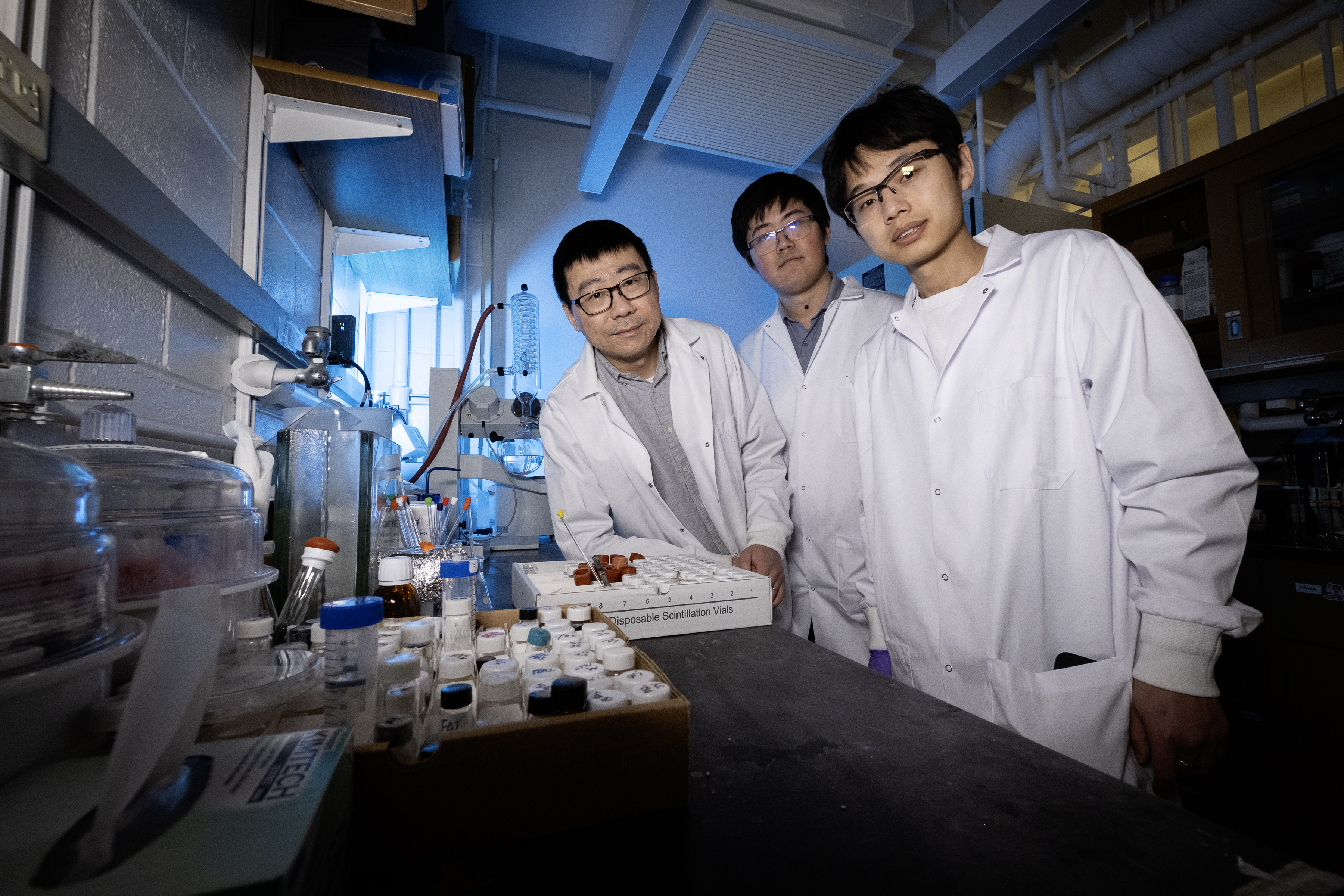
The beauty of research is that the conclusion of one experiment is often the start of others. The drive to know more after publishing a 2022 paper has led Letian Dou to create methods to produce polymers that are suitable for closed-loop recycling and scalable to industry levels.
Dou is the Charles Davidson Associate Professor of Chemical Engineering in the College of Engineering and associate professor of chemistry in the College of Science, by courtesy. Two papers about his polymer research recently have been published in the journals Nature Chemical Engineering and Nature Chemistry.
The Catalyst: Single-Crystal Polymers
The groundwork for these two recent publications was a 2022 publication in the Journal of the American Chemical Society. Dou and his colleagues wrote about unusually elongated carbon-carbon bonds in polymer single crystals.
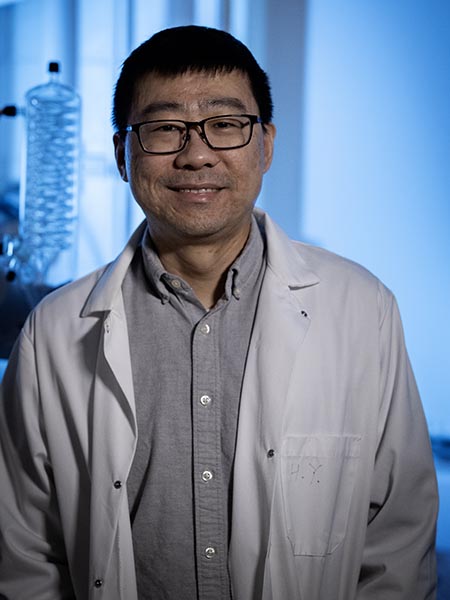
“We found these long bonds make the polymers easier to break. Thus, they can be reverted to monomers, making them suitable for closed-loop recycling,” he said. “The polymers also exhibited rapid thermal depolymerization at elevated temperatures, while presenting remarkable stability under other harsh conditions, akin to traditional polymers.”
However, the tunability and scalability of topochemically prepared polymer crystals is limited. Crystallization-dependent synthesis is costly, and achieving suitable packings for topochemical polymerization severely limits viable structures.
“The challenge was that these polymers were in single crystal form — they are brittle and not easy to process, which means they are not compatible with industry infrastructure,” Dou said.
Additionally, the processing challenges associated with polymer crystals, modifications, including side-chain alterations to the structure, can result in a loss of monomer photoreactivity. These complexities represented obstacles to real-world applications.
“This compelled us to explore the possibility of synthesizing these polymers through industrially compatible methods, for example, solution-phase free-radical polymerization, while retaining their depolymerizability,” Dou said.
The Second Study: Creating Amorphous Polymers
In the February 2025 Nature Chemical Engineering paper, Dou and his team showed the polymers can be made into an amorphous form by using conventional methods that are compatible with industrial production infrastructure.
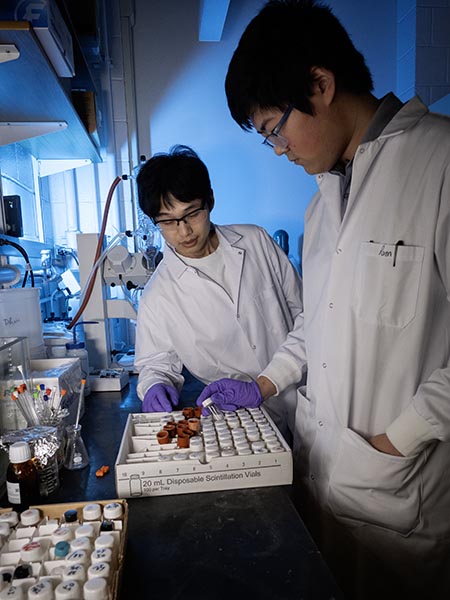
“We demonstrated a series of biologically sourced polymuconate polymers synthesized via simple free-radical polymerization that exhibit intrinsically weakened C–C bonds and controlled chemical recycling to monomers,” said Qixuan Hu, a fifth-year graduate student at Purdue ChE and leading author of the paper.
Dou, Hu and the team modified the side chains and copolymerization ratios, which allowed a wide range of mechanical property tuning, achieving performances comparable to commercial plastics such as polystyrene, polymethyl methacrylate and polybutadiene.
“The elongated and weakened C-C bonds still exist, and the polymers are still recyclable, reverting back to monomers,” Hu said.
Dou and his team collaborated with Gregg Beckham’s team at the National Renewable Energy Laboratory to conduct a technoeconomical analysis and life cycle assessment, showing the Purdue materials are slightly more expensive and environmentally intensive than conventional polymers.
“However, use of recycled materials via depolymerization can greatly decrease the cost and environmental impacts of polymuconate production, down to $1.59 per kilogram, which outperforms commercial counterparts,” Dou said.
The Third Study: Using UV Light in Polydiene synthesization
Dou reported in the Nature Chemistry paper the discovery of a new and elegant way to synthesize polydienes, particularly the polymuconate polymers as described in the previous paper. These polymers have their monomer as a diene, or two carbon-carbon double bonds connected by a carbon-carbon single bond.
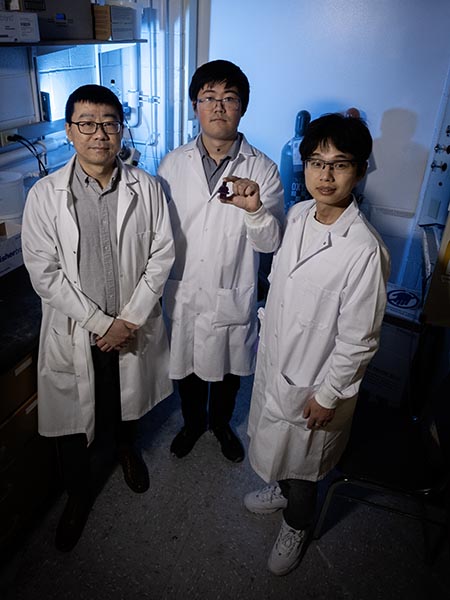
“Polydienes are ubiquitous in modern applications, including rubbers bands, tires and toys, but their preparation utilizes sophisticated and costly reagents, such as catalysts and initiators,” Dou said. “These introduce complexities in terms of purification and handling.”
Other traditional methods to prepare polydienes have drawbacks:
- Because dienes have high termination rates, radical polymerization suffers from inefficiencies, leading to poor control over polymer molecular weight and distribution.
- Coordination and anionic polymerizations, widely employed by industry for polybutadiene and polyisoprene synthesis, require stringent conditions and these polymers are hard to chemical recycle.
- Topochemical polymerization, although a clean pathway to near-perfect polymer crystals, faces practical limitations, including the necessity for crystallinity and molecular alignment, the inability to construct flexible architectures such as block copolymers, and poor solubility and processability.
Dou and his team created a novel ultra-clean photo-melt-bulk polymerization (PMBP) method that doesn’t use solvents, catalysts or initiators to synthesize polymuconate esters. This class of bio-sourced polydienes are amorphous, processable, and chemically recyclable.
The key step of the process is shining ultraviolet (UV) light on the monomers in their melt state, around 100C. It eliminates the use of an organic solvent, which is costly and sometimes toxic, the use of a catalyst and an expensive initiator. The end products are extremely clean and high quality.
“By utilizing UV irradiation, we generated long-lived biradicals that enable stable chain-propagation with minimum chain-termination probabilities, ensuring controlled growth and high molecular weights with negligible 1,2-addition defects,” said Pengfei Wu, a postdoctoral researcher at Dou’s lab and leading author of the Nature Chemistry paper. “This method exhibits linear chain growth kinetics with a direct correlation between molecular weight and conversion, highlighting its controllable nature.”
The unique polymerization mechanism was investigated via collaboration with Brett Savoie’s team at University of Notre Dame, who used density functional theory and molecular dynamics to elucidate the carbon-carbon bond formation and dissociation mechanisms.
The PMBP method also facilitates the straightforward synthesis of complex polymer architectures such as ABA tri-block copolymers, ABS (Acrylonitrile-Butadiene-Styrene)-like plastic while supporting efficient chemical recycling and closed-loop polymer reuse.
“These materials are promising for replacing ABS elastomers, which are used in LEGO plastic construction toys and thermoplastic elastomers with mechanical properties; and now they can be chemically recycled,” Wu said.
Dou said the new chemistry means the cost of synthesizing polymer and co-polymers can be further lowered, although he and his team have not conducted a detailed economic analysis.
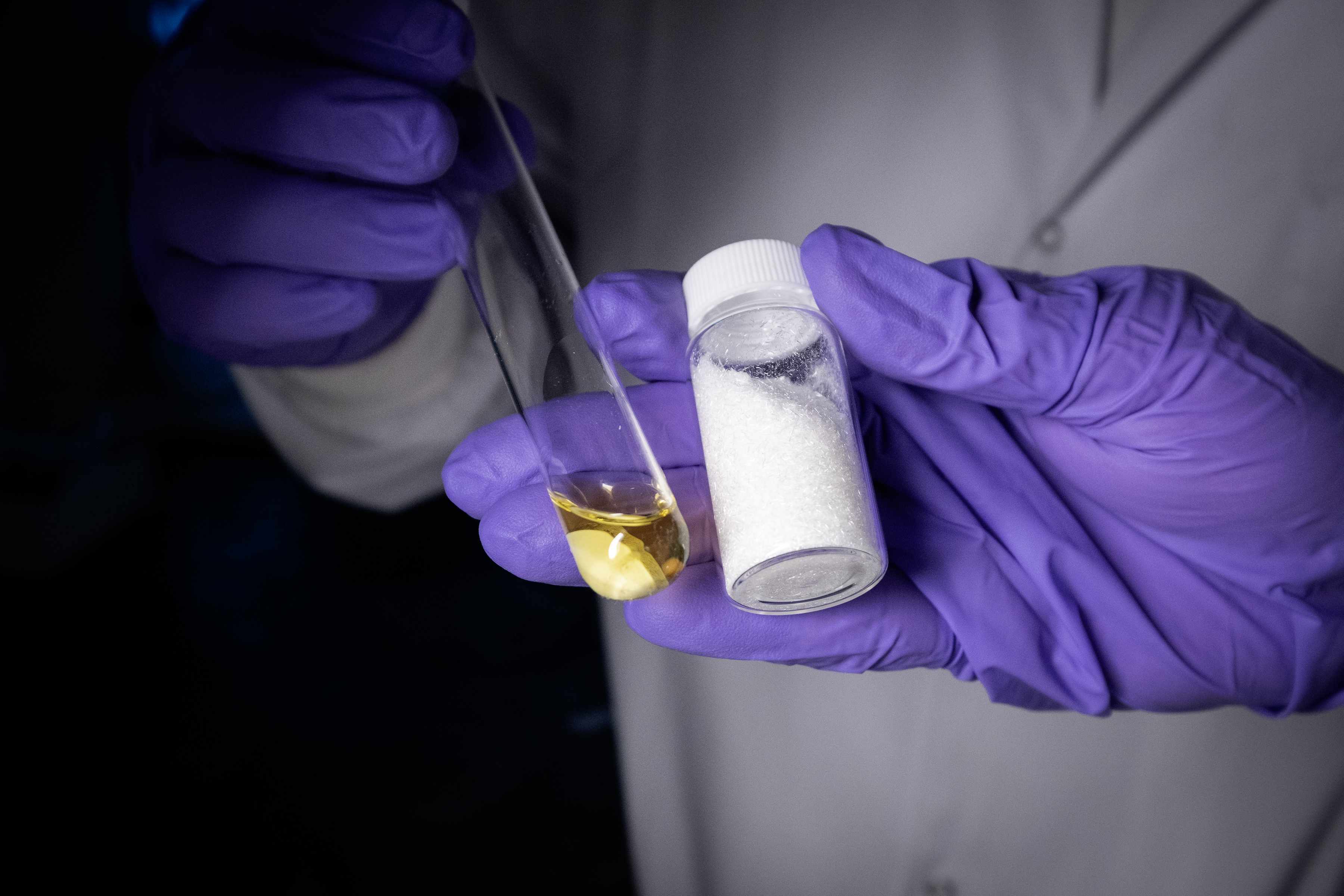
Next Development Steps
Dou disclosed his innovations to the Purdue Innovates Office of Technology Commercialization (OTC), which has applied for patents from the U.S. Patent and Trademark Office to protect the intellectual property. These technologies are available for license through the OTC.
Dou outlined several steps to develop the amorphy polymer production and UV irradiation method.
“We need to scale up the production of the precursor materials and the polymer,” he said. “We also want to study new structures and explore new properties and new applications. We would like to seek industry or venture capital investment on these technologies.”
The Davidson School of Chemical Engineering and the Ralph W. and Grace M. Showalter Research Trust fund financially supported Dou’s research.
